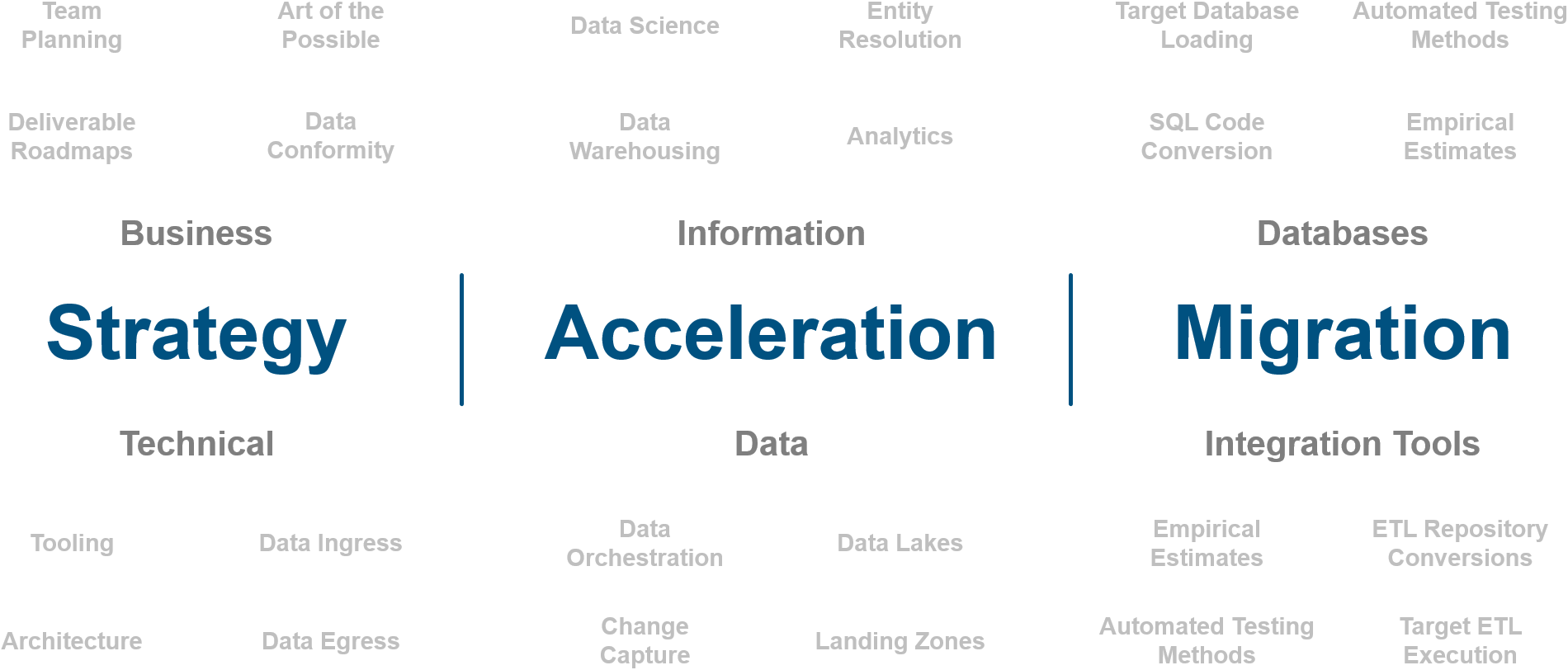
Data for the Factory Floor
Written by Jared Hillam

One of the common challenges in the manufacturing space is that the machinery for the factory floor represent a massive investment. Often manufacturing startups can’t even begin without a large upfront capital outlay. Large organizations might see such an investment as one of many things they must spend their money on, but this is not so for smaller organizations.
This analogy applies to the Data Management space. Every organization has to deal with managing data. However, the timing of when organizations take on such challenges tends to favor companies with large budgets. Small and Medium Businesses (SMB) often have to contend with the fact that they still face the same problems as larger organizations, but live under a much smaller budget ceiling. So they often live with their data problems until they grow into a massive pain to the business. However, this doesn’t mean that SMBs don’t make big investments in Data Management. The type of SMB companies that are willing to make such investments are those that see data as part of their factory floor. Just like our example of the startup manufacturer, to make any money they’re going to need the machinery. These are companies that do things like data brokerage, data enrichment, provide reference data, provide data as part of their product offering, or even need data to successfully engage their customers with their product. Even if these companies are smaller companies or startups, they’re willing to plan investment dollars to get their data management backbone up and running. In this white paper I’m going to share 3 short case studies of companies that made such an investment, and help you set some basic expectations.
Case 1: Cosmetics Startup
Intricity has been engaged with a startup that sells cosmetics through an online subscription model. Their popularity made them grow very quickly, but they realized that they wouldn’t be able to grow much further if they couldn’t get some visibility into their back end logistics and customer experience. They self-imposed a waiting list which grew to hundreds of thousands of potential customers. The deployment of applications was in flight but they knew they would need visibility into these applications in order to determine how well they were managing their growth as they let more people off the waiting list.
They invested in a Data Warehousing project which drew data in from their major applications and ultimately gave them cross functional visibility which spanned Billing, Support, Campaigns, Customer Purchases, Shipments and Website Sessions. This enabled them to identify a wide variety of weaknesses in their business model and customer experience. Ultimately they were able to bring in their waiting list of users resulting in millions of dollars of added revenue.
Case 2: Car Leasing Startup
Intricity has been engaged with a startup that simplifies the complexities of leasing cars through their mobile app which is tied to a network car dealerships. Their back end data had been designed to support their mobile apps, but analyzing this data required constant heavy lifting queries from their analysts to get any meaningful results. Knowing that they would need to monitor transactions in a much more repeatable way, they worked with Intricity to develop a cloud based Data Warehousing solution. This allowed them to create a foundation which they could use to make querying their application events much easier.
Case 3: Identity Management Startup
Intricity is engaged with a startup that is dealing with the complexity of identity management in the advertising space. They provide the ability to produce the complex unique profile of individuals based on their browsing history. Intricity assisted this startup to migrate their cloud data graph to a more scalable solution. Once their graph database was able to be more performant, Intricity assisted them in redesigning their graph data structure to better support higher quality deterministic relationships compared to existing probabilistic relationships. These changes made it possible for them to provide a much higher value product to their customer base, and has helped them become a major player in their space.
So How Do You Know?
So how do you know if your investment represents a factory floor investment? After all, data has become so pervasive that it basically is part of every aspect of a company’s offering. Here are some questions you can ask to gauge what level of budgets you should be spending:
- Is my product, data?
- Does my product come with data?
- Can my product successfully reach our customer without data?
- Is my growth severely capped without data?
If you answered Yes to any of those questions then data is part of your factory floor. In other words without it your business won’t succeed.
So What’s the Cost of a Data Management Solution?
Fixing a data management problem unfortunately doesn’t come with a cookie cutter. That’s not to say that there are no repeatable practices, but just as our case studies had different scenarios, the patterns used will vary for each data management architecture. However, we don’t want to leave this white paper without setting some ballpark expectations of what you’ll spend on your factory floor. You should expect a median investment of $200,000 of consulting services to get your factory floor off the ground, and a median of $85,000 per year in tools and technologies. This is MEDIAN so many higher and many lower size engagements occur regularly. Don’t look at those prices as your budget for your project, otherwise you could find out that you have grossly underestimated your effort.
The reason that we give a price range is because often SMBs are so unprepared for their investment, that they don’t secure the necessary funding to be successful, or worse they just flounder without making meaningful progress and ultimately fail.
Getting in the Weeds
It’s perfectly justifiable to assess the size of the elephant before embarking on such a project. Intricity does many such assessments every year. Conducting an assessment involves interviews with both technical and business stakeholders and usually is about a 2-week effort: One week on site, and one week off site to assemble all the documentation to support and justify the recommendations. If you would like to engage Intricity in such an exercise I recommend that you reach out to Intricity to talk with a specialist. You can email us directly at specialist@intricity.com
Who is Intricity?
Intricity is a specialized selection of over 100 Data Management Professionals, with offices located across the USA and Headquarters in New York City. Our team of experts has implemented in a variety of Industries including, Healthcare, Insurance, Manufacturing, Financial Services, Media, Pharmaceutical, Retail, and others. Intricity is uniquely positioned as a partner to the business that deeply understands what makes the data tick. This joint knowledge and acumen has positioned Intricity to beat out its Big 4 competitors time and time again. Intricity’s area of expertise spans the entirety of the information lifecycle. This means when you’re problem involves data; Intricity will be a trusted partner. Intricity's services cover a broad range of data-to-information engineering needs:
What Makes Intricity Different?
While Intricity conducts highly intricate and complex data management projects, Intricity is first a foremost a Business User Centric consulting company. Our internal slogan is to Simplify Complexity. This means that we take complex data management challenges and not only make them understandable to the business but also make them easier to operate. Intricity does this through using tools and techniques that are familiar to business people but adapted for IT content.
Thought Leadership
Intricity authors a highly sought after Data Management Video Series targeted towards Business Stakeholders at https://www.intricity.com/videos. These videos are used in universities across the world. Here is a small set of universities leveraging Intricity’s videos as a teaching tool:

Talk With a Specialist
If you would like to talk with an Intricity Specialist about your particular scenario, don’t hesitate to reach out to us. You can write us an email: specialist@intricity.com
(C) 2023 by Intricity, LLC
This content is the sole property of Intricity LLC. No reproduction can be made without Intricity's explicit consent.
Intricity, LLC. 244 Fifth Avenue Suite 2026 New York, NY 10001
Phone: 212.461.1100 • Fax: 212.461.1110 • Website: www.intricity.com

